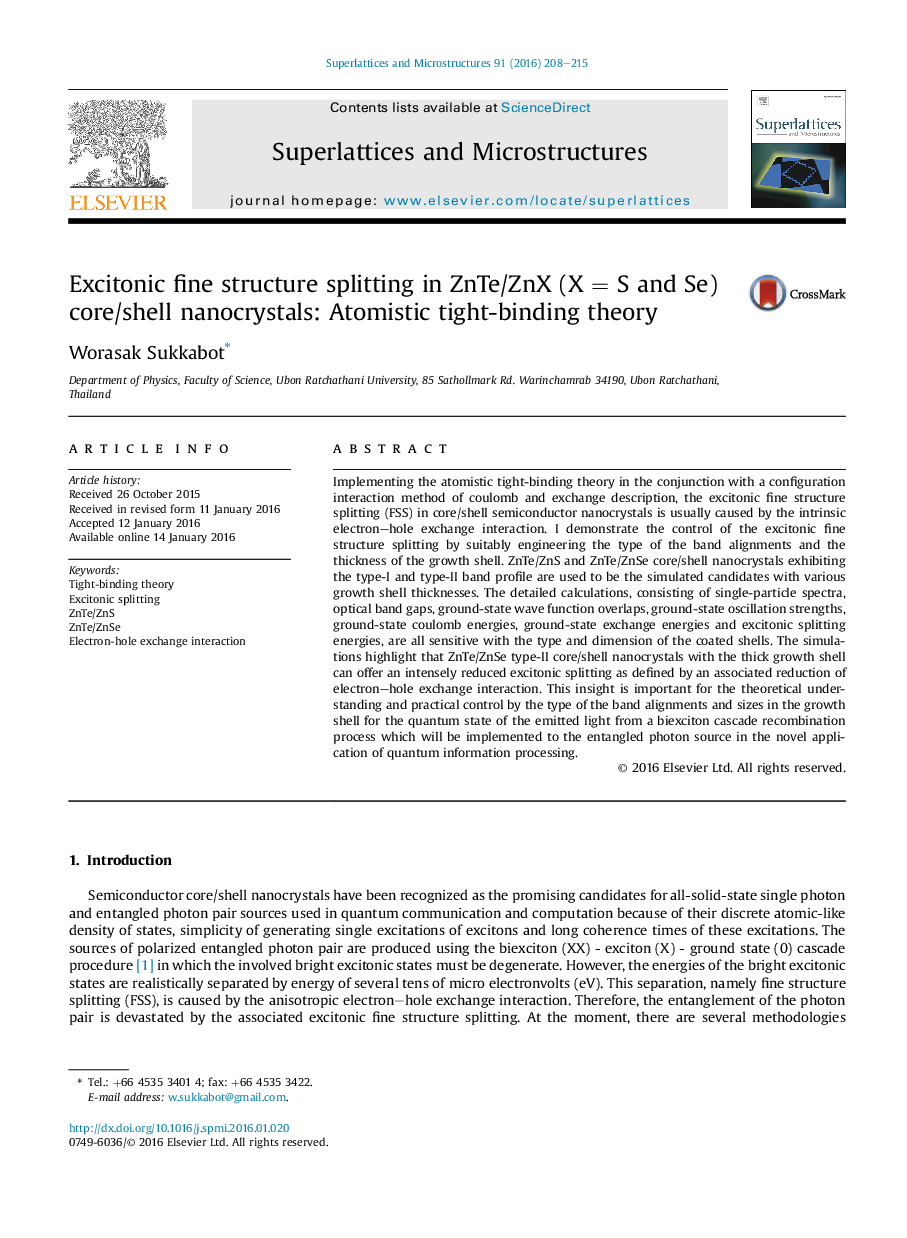| Article ID | Journal | Published Year | Pages | File Type |
|---|---|---|---|---|
| 1552701 | Superlattices and Microstructures | 2016 | 8 Pages |
•I show the manipulation of excitonic fine structure splitting by changing the type of band profiles and shell thickness.•Stoke shift and excitonic fine structure splitting are decreased with the increasing shell thickness.•ZnTe/ZnSe core/shell type-II nanocrystals offer a reduced excitonic fine structure splitting.
Implementing the atomistic tight-binding theory in the conjunction with a configuration interaction method of coulomb and exchange description, the excitonic fine structure splitting (FSS) in core/shell semiconductor nanocrystals is usually caused by the intrinsic electron–hole exchange interaction. I demonstrate the control of the excitonic fine structure splitting by suitably engineering the type of the band alignments and the thickness of the growth shell. ZnTe/ZnS and ZnTe/ZnSe core/shell nanocrystals exhibiting the type-I and type-II band profile are used to be the simulated candidates with various growth shell thicknesses. The detailed calculations, consisting of single-particle spectra, optical band gaps, ground-state wave function overlaps, ground-state oscillation strengths, ground-state coulomb energies, ground-state exchange energies and excitonic splitting energies, are all sensitive with the type and dimension of the coated shells. The simulations highlight that ZnTe/ZnSe type-II core/shell nanocrystals with the thick growth shell can offer an intensely reduced excitonic splitting as defined by an associated reduction of electron–hole exchange interaction. This insight is important for the theoretical understanding and practical control by the type of the band alignments and sizes in the growth shell for the quantum state of the emitted light from a biexciton cascade recombination process which will be implemented to the entangled photon source in the novel application of quantum information processing.
